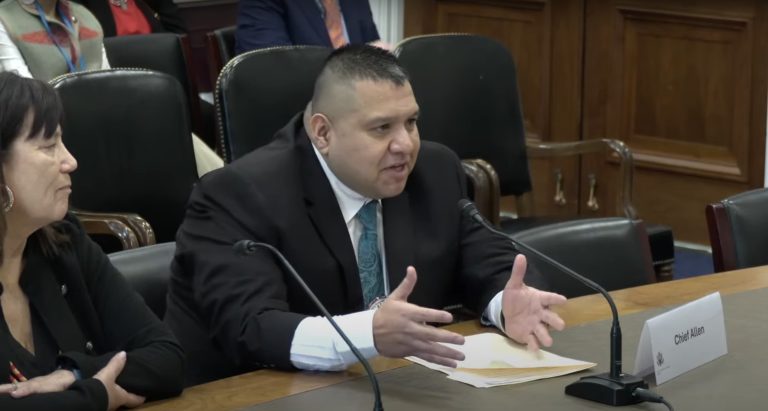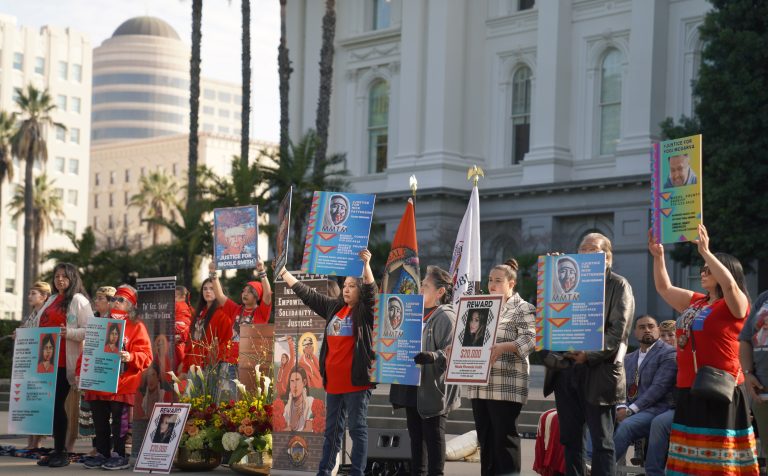Podcast: Play in new window | Download | Embed

Anchor: Antonia Gonzales
President Joe Biden’s nominee to serve as director of the Indian Health Service says, if confirmed, she’ll work to improve the physical, mental, social, and spiritual health and wellbeing of American Indians and Alaska Natives served by the IHS.
Roselyn Tso testified Wednesday before the U.S. Senate Committee on Indian Affairs. (READ or WATCH her testimony)
A citizen of the Navajo Nation, she was nominated in March. She currently serves as Director of the Navajo Service Area IHS.
Tso says she has nearly four decades of working at and lived experience using the Indian Health Service. She says working with tribes and other partners is key to providing care, which was seen during the pandemic.
“Throughout my career at the Indian Health Service I have worked to improve the agency to better meet the needs of the people we serve. This was most evident throughout the pandemic where I saw and was part of a true partnership with the Navajo Nation, the San Juan Paiute Tribes, the local, state, federal and private partners to combat COVID-19.”
If confirmed, Tso says she’ll strengthen and streamline IHS business operations; develop systems to improve accountability, transparency and patient safety; and address workforce needs and challenges.
IHS delivers health care services to more than two million American Indians and Alaska Natives. Her nomination to serve as the Director of Indian Health Service is subject to confirmation by the full Senate.
 Calls to hold federal agencies more accountable for the crisis of missing and murdered Indigenous people are growing, including in Washington, D.C.
Calls to hold federal agencies more accountable for the crisis of missing and murdered Indigenous people are growing, including in Washington, D.C.
Here’s Sen. Ben Ray Luján (D-NM) during a recent committee hearing: “Now, Miss Ella Mae Begay went missing from the Navajo Nation in June of 2021, but her and over 9500 missing Native people are not listed in either database.”
The combined number of cases listed in databases from the Department of Justice and Bureau of Indian Affairs amounts to roughly 60. An Indian Affairs official pointed to the lack of data due to a personnel change.
 Grant money will help some areas improve internet service for the Sisseton Wahpeton Oyate Tribe in South Dakota. The pandemic has highlighted the need for improved connectivity in Indian Country. Mike Moen has more.
Grant money will help some areas improve internet service for the Sisseton Wahpeton Oyate Tribe in South Dakota. The pandemic has highlighted the need for improved connectivity in Indian Country. Mike Moen has more.
The federal government says $77 million will be shared among tribal governments in 10 states, to be used for things like new equipment and creating affordable internet service programs. Sherry Johnson, education director for the Sisseton Wahpeton Oyate Tribe, says many local students weren’t able to be fully connected with teachers when schools were shutdown.
“This really affected our children – with our academics, our test scores – and we definitely can see that in our data.”
She says reading and math scores saw declines. But with this funding, the roughly 700 homes on the Lake Traverse Reservation will get more reliable service, and schools will be equipped with devices like Chromebooks.
Johnson says that puts families in a better position for future distance-learning scenarios. She says some homes already have service, but the bandwidth is low. Adding to the dilemma is a large land ridge that runs through the reservation.
“And at times, it’s really a barrier for our cell boosters and stuff [that] are needed to really pick up and have a good signal there.”
She says they’ll be able to buy more equipment to counteract those signal disruptions. The community will see other connection gaps addressed, including telehealth.
The two other grantees in South Dakota are the Cheyenne River and the Flandreau Santee Sioux Tribes.
The Census Bureau’s American Community Survey shows tribal areas trail the rest of the nation by 21% when it comes to homes with internet service.
Get National Native News delivered to your inbox daily. Sign up for our newsletter today.



